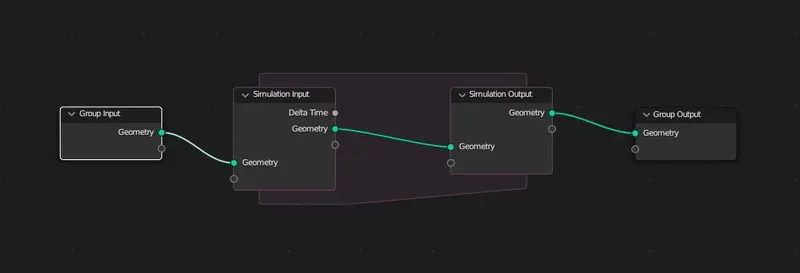To Upgrade or not to upgrade...
That is the question!

As a 3D artist or designer, using the latest version of Blender 3D software can significantly enhance your workflow and improve the quality of your work.
Blender developers frequently release updates that include:
- Bug fixes
- Feature improvements
- New tools.
But how often should you update Blender 3D?
In this comprehensive guide, we will discuss the factors to consider when deciding to update your software and provide recommendations on how often to update Blender 3D.
How to Upgrade Blender
Before we talk about if you should upgrade, lets look at how to upgrade to the next version of blender.
You can upgrade your Blender version in several ways. But the most common is to download the latest version through blender.org/downloads].
Other useful ways to update include:
- Through Steam
- Through the Windows App Store
But do you actually need to update?
Factors to Consider
Before diving into the frequency of updating Blender 3D, it is essential to consider a few factors that can influence your decision:
Stability and Bug Fixes
One crucial factor to consider when deciding to update Blender 3D is the stability of the current version you are using.
Blender developers often release updates to fix bugs and stability issues found in earlier versions. If you are experiencing regular crashes or encountering major bugs that hinder your workflow, it may be a good idea to update to the latest version for a more stable experience.
You can find LTS release candidates which stand for Long Term Support. These release candidates are supported with fixes up to 2 - 3 years.
Which makes LTS versions of Blender perfect for more long term projects where stability is a must.
Feature Updates and Improvements
Another factor to consider is the availability of new features and improvements in the latest version.
Blender continuously strive to enhance the software by adding new tools, improving existing ones, and implementing user-requested features.
If there are specific features or improvements that can significantly benefit your work, updating to the latest version may be beneficial.
For example, in the new 3.6 update simulations were added to the also new Geometry Node features.

Compatibility
Compatibility is a crucial factor to consider, especially if you collaborate with other 3D artists or work in a production pipeline that relies on specific Blender versions.
If your project involves multiple artists using the same software version, it is important to coordinate and ensure everyone is working on the same Blender version to avoid any compatibility issues.
If one person is using one version, and you are using another... well... That is a recipe for disaster!
Workflow Disruption
Updating to a new Blender version can sometimes lead to changes in the:
- user interface
- tools
- or shortcuts
It may take some time for you to adjust and familiarize yourself with the changes, which could disrupt your workflow temporarily.
Therefore, be mindful of any ongoing projects or looming deadlines before deciding to update Blender 3D.
Recommended Update Frequencies
Now that we have discussed the factors to consider, let's explore some recommended update frequencies based on common scenarios:
Regular Updates
If you are using Blender 3D for personal projects, learning purposes, or experimenting with new features, you may benefit from updating to the latest version as soon as it is released.
Regular updates ensure that you have access to the* latest improvements and features*, and it allows you to stay up-to-date with the Blender community.
The downside of this approach is that you will be at the mercy of potentially unstable releases compared to the LTS versions. Especially true for the beta and alpha releases.
Update with Minor Releases
Blender developers typically release two types of updates: major releases and minor releases. Major releases, such as going from version 2.8 to 2.9, bring significant changes and new features.
Minor releases, on the other hand, focus on bug fixes and smaller improvements within the same major version (e.g., 2.91.1 to 2.91.2).
If you are using a stable and reliable version of Blender 3D, but there are minor releases available, it is recommended to update with minor releases. These updates are usually quicker and less disruptive to your workflow, as they focus primarily on fixing bugs and improving stability.
Coordinate with Collaborators
If you are working on a collaborative project or part of a production pipeline, it is essential to coordinate and ensure all team members are using the same Blender version.
This prevents compatibility issues and ensures smooth collaboration. Consult with your team or supervisor to establish a specific version that everyone should use and update accordingly.
Evaluate Stability and Features
When deciding whether to update to a major release, take the time to evaluate its stability and new features. Blender's community and forums are great places to gather information and feedback from other users.
If the new version offers significant stability improvements or features that align with your needs, it may be worth the temporary disruption to your workflow.
Backup and Test Projects
Before updating Blender 3D, it is crucial to backup your projects and test them in the new version. This allows you to identify any potential issues or compatibility problems before fully committing to the update. By having backups and running tests, you can minimize the risk of losing or damaging your work during the update process.
Conclusion
Updating Blender 3D is a decision that requires careful consideration based on factors such as:
- stability
- bug fixes
- feature improvements
- compatibility
- workflow disruption.
By evaluating these factors and understanding your specific needs, you can determine how often to update Blender 3D.
Whether you choose to update with every release, with minor releases, or based on specific project requirements, staying up-to-date with the latest version of Blender can enhance your workflow and enable you to leverage new features and improvements in your 3D projects.
Personally I would try and make sure you are on the latest stable release if you are working as an individual.
Polyfable
Bring your stories to life
Are you tired of scrolling youtube?
Trying to learn how to tell your story?
Become a member and get access to our amazing courses and levels!
Join NowAnd if you are learning the software - even using the beta or alpha versions would be beneficial to learn about new features that will eventually make it’s way to Blender. That would give you a head start before they too end up in the LTS.

